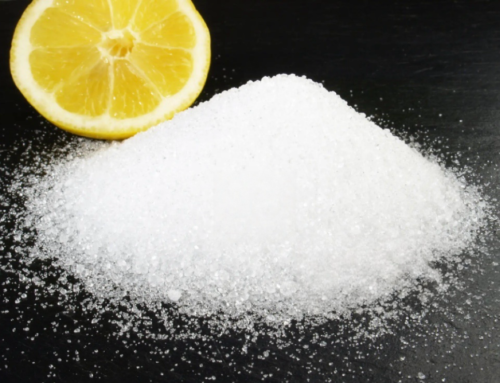Monopotassium phosphate, scientifically known as potassium dihydrogen phosphate, is a water-soluble salt with the formula KH2PO4. It is a popular food additive used extensively in the food industry for various applications. While it is well known as a fertilizer and buffering agent, its role as a food additive is multi-faceted, including being a pH regulator, leavening agent, stabilizing agent, and nutrient source. In this blog, we will focus on the uses and mechanisms of monopotassium phosphate in food.
Uncover the Uses of Monopotassium Phosphate in Food
pH Regulator:
The pH level of food is crucial for maintaining its taste, texture, and shelf-life. Monopotassium phosphate acts as a buffering agent in food, helping to stabilize the pH level of food products. This is especially important in processed foods, beverages, and bakery products, where fluctuations in pH can adversely affect the overall quality.
Monopotassium phosphate acts as a buffering agent by donating or accepting hydrogen ions (H+) to maintain a stable pH level. When the pH of the food decreases, monopotassium phosphate donates hydrogen ions to the solution, raising the pH. Conversely, when the pH increases, it accepts hydrogen ions, lowering the pH. This helps in maintaining the desired pH level in food products, thereby preserving their quality and shelf-life.
Leavening Agent:
 Monopotassium phosphate is commonly used as a leavening agent in food like bakery. When combined with an alkali, such as sodium bicarbonate, it releases carbon dioxide, causing the dough or batter to rise. This results in light and fluffy baked goods like cakes, muffins, and bread.
Monopotassium phosphate is commonly used as a leavening agent in food like bakery. When combined with an alkali, such as sodium bicarbonate, it releases carbon dioxide, causing the dough or batter to rise. This results in light and fluffy baked goods like cakes, muffins, and bread.
The leavening action of monopotassium phosphate occurs through a chemical reaction with an alkali, usually sodium bicarbonate (baking soda). When mixed with water and heated, monopotassium phosphate reacts with sodium bicarbonate to release carbon dioxide gas. This gas gets trapped in the dough or batter, causing it to rise and resulting in a light and airy texture.
Stabilizing Agent:
Monopotassium phosphate helps stabilize food products by preventing the separation of ingredients and maintaining the uniformity of the product. This is especially crucial in emulsions and suspensions, where it prevents the separation of oil and water phases.
The phosphate ion in monopotassium phosphate can form complexes with multivalent cations, like calcium and magnesium, preventing them from destabilizing the emulsion or suspension. This helps maintain the homogeneity and texture of the food product.
Nutrient Fortification:
Being a source of potassium and phosphorus, monopotassium phosphate contributes to the nutritional content of food. Potassium is vital for muscle function, nerve transmission, and fluid balance, while phosphorus is essential for bone and teeth formation, energy metabolism, and cell membrane structure.
Monopotassium phosphate serves as a nutrient fortifier by contributing potassium and phosphorus to the food. Since it is water-soluble, it easily dissolves in the food matrix, making these essential nutrients available for absorption by the body.
Others Should be Noticed Regarding Monopotassium Phosphate
Shelf Life
Our monotassium phosphate has a 24-month shelf life. When you receive it, use it within the shelf life.
Packing
Each pack of our monotassium phosphate is in a 25kg PP+PE bag with 2 layers. We also have 25kg paper bags to respect your environment-friendly consideration by providing customizing services on labels. We will provide the labels as you request.
Storage Condition
Monopotassium phosphate should be stored in a cool, dry, and well-ventilated area, away from moisture and strong acids or alkalis. It is best kept at room temperature in its original packaging or a well-sealed container to prevent contamination.
Conclusion
Understanding the uses and mechanism of monotassium phosphate can help food manufacturers optimize its functionality and ensure high-quality food products. Leave a message at [email protected] if you need a quotation, and we’ll respond within 24 hours.




